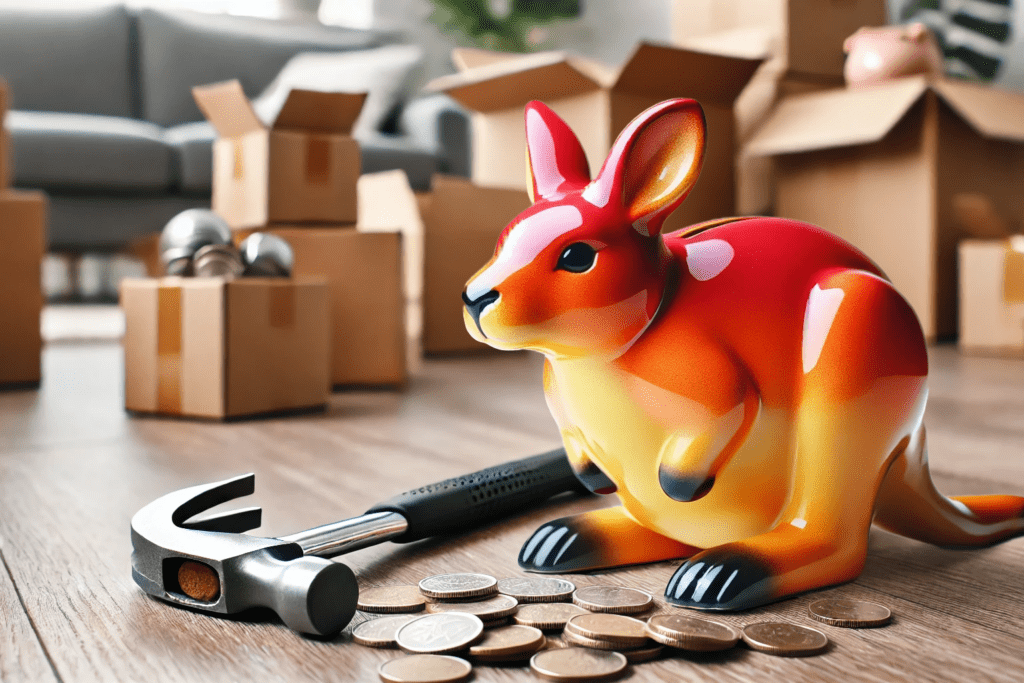Are you daunted by the thought of an interstate move? The distance to travel, the planning required and the costs involved can make the process feel overwhelming.
Moving interstate involves more than just packing up and hitting the road. You have to think about the transportation of your belongings, the potential need for temporary storage and the logistics of moving your pets, vehicles and kids.
But don’t worry because, with some organisation and insider tips, you can turn this challenge into an easier project. Follow our guide on how to move interstate, and you’ll be relaxing in your new home in no time.
Planning and preparation
Getting a head start with your planning and preparation is crucial for a smooth and stress-free interstate move. Here’s how:
Start planning early
The earlier you start planning, the better. Begin by setting your moving date and then work backwards to schedule all the necessary tasks. This approach ensures you have enough time to deal with unexpected issues without added stress.
Create a checklist
Checklists are a great way to keep track of what needs to be done, and the sense of relief from ticking and flicking tasks helps to keep you motivated.Start by listing every task that needs to be completed before, during and after the move. Break down larger jobs into smaller, manageable steps. For example, instead of writing ‘pack kitchen’, break it down into ‘pack dishes’, ‘pack pots and pans’ and ‘pack small appliance’.
To make things easier, organise your checklist by creating a timeline with tasks for one month before the move, two weeks before, one week before and the day before. Include items like booking removalists, notifying utility companies of your move and changing your address with important institutions. Regularly update the list to keep track of your progress
Set a budget
The costs of moving interstate can add up, so it’s crucial to budget accordingly. Here are some costs to consider:
- removalists and packing supplies such as boxes, bubble wrap, tape and labels
- travel and temporary accommodation (for your pets, too) if needed
- cleaning supplies for your new home
- utility connection fees
- temporary storage
- unexpected expenses
Research and compare prices to find the best deals. Moving companies are generally the biggest expense, so compare quotes from different companies and decide whether you need full-service movers or if you can handle some tasks yourself to save money.
Check out our guide on how much it costs to move interstate.
Decluttering and organising
Before packing, sort through the stuff you plan to move interstate. This is a good opportunity to donate, sell or dispose of items you no longer need. Being organised not only reduces the number of items you need to move but can also provide a little extra cash for the transition.
Donate, sell or dispose
Decluttering and downsizing can feel overwhelming. Start by sorting through your clothing and accessories, discarding anything you haven’t worn in the past year. Move on to electronics, recycling or selling outdated items and cables. Next, tackle books and magazines, toys and games. Simplify your décor and organise documents, shredding any papers that are no longer needed. Get into the kitchen and discard containers, serving-ware and cooking utensils you don’t use. Clean out the garage of old tools and sporting equipment. Try selling your unwanted items at second-hand bookstores and furniture shops, through online platforms, by hosting a garage sale or taking a stall at your local market.
Organising and categorise
Organise your stuff into categories: essentials, non-essential and items for storage. Label boxes clearly to make unpacking easier. Disassemble furniture to save space and reduce the risk of damage.
Pack a box of essentials that you will need for immediate use when you arrive at your new home. This box should include toiletries, a few days’ worth of clothes, bedding, important documents and basic kitchen supplies. Non-essentials can be unpacked later.
Packing strategies
There’s an art to packing. Here are our tips for getting it right:
- Invest in good-quality packing supplies. Use sturdy boxes, bubble wrap for fragile items, and plenty of labels. Clearly mark boxes with their contents and the room they belong to.
- For large pieces of furniture, use protective covers and padding. Disassemble where possible and keep screws and small parts in labelled bags taped to the furniture.
- Moving plants requires special care. Water them a few days before the move, not on the day itself. Use sturdy, well-ventilated boxes and cushion the plants with bubble wrap to prevent movement.
- Wrap fragile items individually with bubble wrap or packing paper. Also, use plenty of cushioning material in the boxes and clearly mark them as fragile.
- If you’re moving your car interstate, consider whether to drive it yourself or use a car transport service.
- For pets, determine how you will relocate them and ensure they are comfortable and secure during the journey, with access to food, water and toilet breaks.
Hiring professional help
We all need professional help sometimes, especially when it comes to something as time-consuming as moving. Here are our tips for hiring removalists you can trust.
- When choosing removalists, look for experienced companies with good reviews. Check their insurance policies and ensure they offer services specific to your needs.
- Don’t hesitate to ask multiple companies for quotes to compare. Consider the cost, the services included and any additional fees that may apply. Try to get more bang for your buck.
- Ask family and friends for recommendations and read online reviews. Look for companies that are transparent about their services and prices.
Assess your budget, time and capability when weighing up whether to DIY your move or get professional help.
Settling into your new home: a checklist for moving interstate
Day 1: Arrival day
- Inspect the house for any immediate issues or repairs needed.
- Clean key areas such as the kitchen and bathrooms.
- Unpack your essential boxes with toiletries, basic kitchen items, clothes and bedding.
- Set up your bed and make it a priority to have a comfortable sleeping space. Moving is exhausting.
- Set up and connect your fridge.
- Do a basic grocery shop for items such as meat, fruit and vegetables, bread and milk.
Day 2: Connect utilities
- Ensure all utilities (electricity, water, gas and internet) are working properly.
- Set up and connect major appliances (such as the TV and washing machine).
Day 3: Unpack and organise
- Focus on unpacking your stuff one room at a time, starting with the kitchen and bedrooms.
- Set up the kitchen: arrange utensils, cookware and pantry items.
- Organise cupboards and storage spaces for easy access to daily items.
Day 4: Check the home security
- Test smoke detectors and replace batteries if needed.
- Consider changing the locks for added security.
- Install any additional security measures like cameras or alarms.
Day 5: Deal with the paperwork
- If you haven’t yet done so, update your address with your bank, insurers and other important institutions. Update your licence.
- Find a local GP and transfer medical records if necessary.
Day 6: Explore
- Do a grocery shop to stock up on pantry items and non-perishables.
- Explore your new neighbourhood to locate nearby essentials such as cafes, pharmacies and parks.
- Introduce yourself to your neighbours.
- Find the closest healthcare facilities, schools and public transportation stops.
- Start considering ways to make new connections, such as in cafes or dog parks.
Day 7: Settle in
- Continue unpacking and arranging your living spaces.
- Hang up photos, artwork and mirrors to make your new place feel like home. Relax and enjoy your new home, making a list of any remaining tasks to tackle in the coming weeks.
Maintain a positive mindset and stay on top of tasks to reduce stress. Refer to your checklist regularly and give yourself breaks to avoid burnout. Stay connected with loved ones. Share your experiences and let them be part of your adventure.
Choose TAXIBOX for your move
Finding solutions to reduce moving challenges and stress is key. TAXIBOX offers a convenient and flexible storage solution that can be tailored to your needs. We deliver mobile storage units directly to your door, allowing you to pack at your own pace. Once you’re ready, we transport the packed TAXIBOX to your new location, whether it’s across the city or the country. Whether you’re heading to Sydney, Melbourne, Brisbane, Adelaide, Perth or dozens of other locations across Australia, when you’re moving interstate, we’ve got you covered.
TAXIBOX storage units are designed with security in mind and sturdy construction. Our facilities are monitored, ensuring your belongings are safe and protected, whether stored short-term or long-term.We provide competitive pricing with no hidden fees. You’ll receive a clear, upfront quote, ensuring you know what to expect and helping you manage your moving budget effectively.
Get organised and happy moving!
So there you have it — your how-to guide on moving interstate. With early planning, smart packing and the right help, you can make your move smooth and stress-free. And who doesn’t want that?As you prepare for your interstate move, TAXIBOX is here to handle your storage needs. Our flexible and secure storage solutions can simplify the moving process, providing you with peace of mind and extra space when you need it most. From convenient mobile storage units to our responsive and friendly customer service, TAXIBOX is here to take the hassle out of your move.


